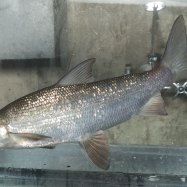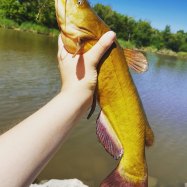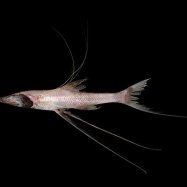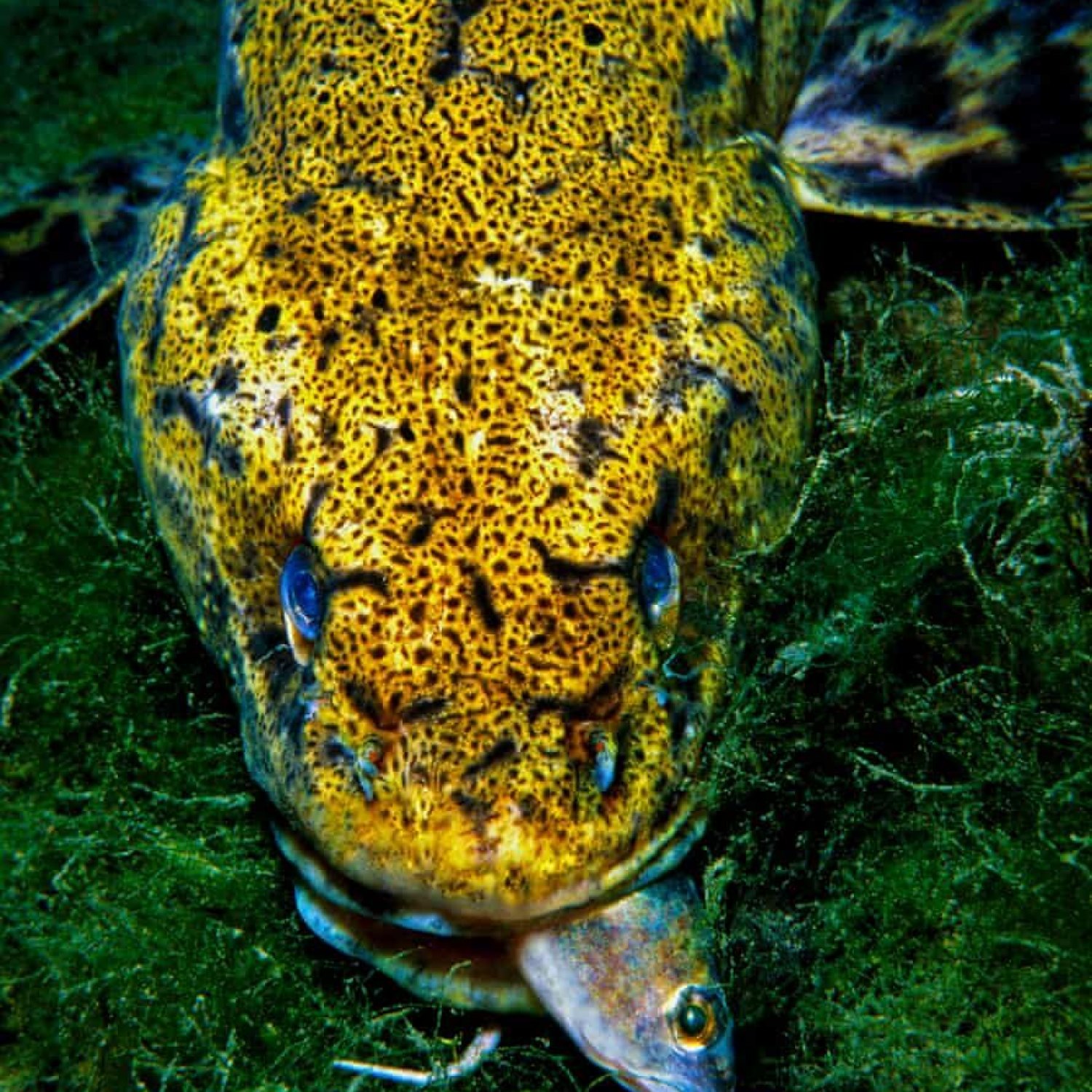
Burbot
Migration during spawning
The burbot fish, also known as the poor man's lobster, is a unique freshwater fish found in North America. These fish can live up to 25 years and migrate during spawning, which occurs in early spring. Their white, flaky meat makes them a popular species for fishing. Next time you're out on the water, keep an eye out for this elusive and delicious fish. Catch one and enjoy a tasty meal! #Burbot #FishingSeason #NorthAmerica
Summary of Fish Details:
Common Name: Burbot
Habitat: Freshwater
Color: Olive-brown with lighter mottling
The Enigmatic Burbot: A Fascinating Freshwater Predator
Imagine a creature that can grow up to 3 feet long and weigh up to 20 pounds, living up to 25 years and able to successfully reproduce throughout its entire lifespan. Sounds like a formidable predator, right? But what if we told you that this creature is not a fierce creature of the open seas, but rather a freshwater species found in the Northern Hemisphere? Meet the burbot, or Lota lota, an elusive and captivating fish that inhabits the cold and dark depths of many freshwater systems.The burbot, also known as the eelpout or the lawyer fish, may not be the most popular fish among anglers, but it certainly deserves more attention and recognition for its unique characteristics. From its ambush feeding tactics to its remarkable reproductive behavior, there is much to learn and appreciate about this mysterious fish Burbot.
A Home in the Freshwater Ecosystem
The burbot is a freshwater fish, meaning it lives its entire life in freshwater ecosystems such as lakes, rivers, and streams. Its natural habitat consists of cold and deep waters, often with rocky or muddy bottoms. However, burbot can also be found in some saltwater systems, as well as brackish waters, where freshwater and seawater mix.Being a bottom-dwelling fish, the burbot prefers to live in benthic habitats, feeding on other benthic organisms such as small fish, crustaceans, and insect larvae. Its elongated and cylindrical body shape, combined with its powerful tail fin, allows the burbot to navigate and hunt in these environments with ease.
The Ambush Predator
Unlike most predatory fish, the burbot is not a fast swimmer, nor does it have flashy colors to attract prey. Instead, it relies on its clever ambush tactics to catch its food. Burbot have large, forward-facing and upward-pointing eyes that help them spot and track potential prey.Once it has its eyes on a target, the burbot will stay completely still, blending in with its surroundings, waiting for the perfect moment to strike Blue Danio. With a sudden burst of speed, the burbot will grab its prey in its sharp teeth, and swallow it whole. This ambush tactic makes the burbot a successful predator, even in the dark and murky depths of its habitat.
A Northern Hemisphere Native
Burbot are native to the Northern Hemisphere and can be found in many countries, including the United States, Canada, Russia, and parts of Europe and Asia. The specific distribution can vary due to their adaptable nature, but they are most commonly found in colder regions where the water temperatures stay relatively low.In North America, burbot can be found in the Great Lakes, the Mississippi River Basin, and parts of Alaska and Canada. In Europe, they are found in Sweden, Norway, and parts of the Baltic and North Seas. In Asia, they can be found in countries such as Russia, China, and Japan.
The Olive-Brown Master of Disguise
One of the distinctive features of the burbot is its coloration. Its body is typically olive-brown with lighter mottling, making it difficult to spot in the dark and murky waters it inhabits. This coloration also allows the burbot to blend in with its environment, making it less noticeable to potential predators.Interestingly, burbot have the ability to change their color to match their surroundings, adding yet another layer to their already impressive adaptability.
Large and Long-Lived
Burbot are a relatively large species, capable of reaching up to 3 feet in length and weighing up to 20 pounds. However, these sizes are typically only seen in colder environments with longer growing seasons. In warmer waters, the burbot tends to be smaller.In addition to their size, burbot are also known for their longevity. They can live up to 25 years, making them one of the oldest freshwater fish species. This extended lifespan is thought to be due to their slow growth rate and low metabolic rate.
A Unique Reproductive Behavior
Burbot are sexual reproducers, meaning they require a male and female to reproduce. However, what makes their reproduction behavior unique is their spawning process. Burbot spawn in early spring, with the exact timing depending on the water temperature and location.During the spawning season, male burbot will congregate in shallow spawning grounds, while females migrate from deeper waters to join them. Once the female burbot arrives, she will lay her eggs in long gelatinous strings, and the males will fertilize them externally. The eggs will then attach to the substrate or any nearby plants or rocks.
After the spawning process is complete, both the male and female burbot will return to their deeper water habitats, leaving the eggs to develop and hatch on their own. This reproductive behavior is truly remarkable and sets the burbot apart from many other freshwater fish species.
The Journey of Spawning Migration
In addition to their unique spawning behavior, burbot also exhibit a fascinating migration pattern during the spawning season. As mentioned earlier, female burbot will migrate from deeper waters to shallow spawning grounds to lay their eggs. But what about the males?Research has found that male burbot go on their own migration journey during the spawning season. They will leave their deepwater habitats and travel to different spawning grounds in search of opportunities to fertilize more eggs. This behavior helps to increase the genetic diversity of the species and increases the chances of successful offspring.
Facing Threats and Conservation Efforts
Despite their impressive adaptability and successful reproduction, burbot populations face some threats. Habitat degradation, pollution, and overfishing in some areas have led to declines in their numbers. Additionally, their slow growth and reproductive rates mean they are more vulnerable to population depletion.Fortunately, there are ongoing efforts to conserve and protect burbot populations. These include monitoring and research initiatives, as well as measures to improve water quality and restore degraded habitats. Fishermen are also encouraged to practice catch-and-release to help sustain burbot populations for future generations.
In Conclusion
The burbot is a truly fascinating fish, with a range of unique characteristics that make it stand out from other freshwater species. From its benthic habitat and ambush feeding tactics to its size, longevity, and remarkable reproductive behavior, the burbot is a true marvel of nature.Despite facing some threats, this elusive and mysterious fish continues to thrive in cold and dark freshwater systems around the world. With ongoing conservation efforts and a growing interest in this species, it is our hope that the burbot will continue to fascinate and amaze future generations for years to come.

Burbot
Fish Details Burbot - Scientific Name: Lota lota
- Category: Fish B
- Scientific Name: Lota lota
- Common Name: Burbot
- Habitat: Freshwater
- Feeding Habitat: Benthic
- Feeding Method: Ambush predator
- Geographic Distribution: Northern Hemisphere
- Country Of Origin: North America
- Color: Olive-brown with lighter mottling
- Body Shape: Elongated and cylindrical
- Length: Up to 3 feet
- Adult Size: Up to 20 pounds
- Age: Up to 25 years
- Reproduction: Sexual
- Reproduction Behavior: Spawning in early spring
- Migration Pattern: Migration during spawning

Burbot
- Social Group: Solitary
- Behavior: Nocturnal
- Diet: Invertebrates, small fish
- Predators: Fish-eating birds, larger fish
- Prey: Invertebrates, small fish
- Environmental Threats: Habitat degradation, pollution
- Conservation Status: Least Concern
- Special Features: Single chin barbel, dorsal fin extends to tail
- Interesting Facts: Only freshwater member of the cod family
- Reproduction Period: Early spring
- Nesting Habit: Under rocks or submerged vegetation
- Lifespan: Up to 25 years
- Habitat Threats: Habitat degradation, pollution
- Population Trends: Stable
- Habitats Affected: Rivers, lakes, and reservoirs
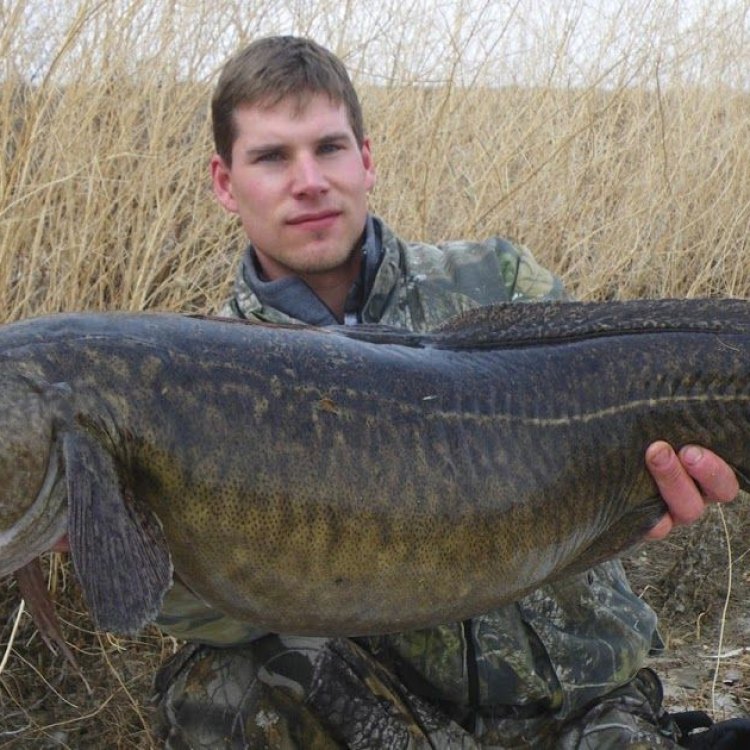
Lota lota
The Fascinating World of the Solitary Nocturnal Burbot
Nature has a way of presenting us with unique creatures that have adapted to their environment in distinctive ways. One such creature is the burbot, the only freshwater member of the cod family. With its solitary nature, nocturnal habits, and interesting features, the burbot is a fascinating fish that warrants closer attention.Found in freshwater habitats such as rivers, lakes, and reservoirs, the burbot is known for its solitary behavior RadioDouRosul.com. Unlike most fish that are gregarious and form schools, burbots prefer to roam alone, making them a challenge to spot and study in the wild. This behavior is partly due to their predatory nature and partly due to their physiology, which allows them to thrive in the cold and often murky waters they inhabit.
Being nocturnal creatures, burbots are most active at night, making them even harder to observe in their natural habitat. This behavior also helps them avoid predators, as fish-eating birds and larger fish tend to be more active during the day. With their single chin barbel, a whisker-like sensory organ, and their dorsal fin extending all the way to their tail, burbots have unique adaptations that aid in their nighttime activities. These features help them navigate and locate their prey in the dark.
Speaking of prey, burbots have a diverse diet that includes invertebrates and small fish. They have a preference for crayfish, sculpins, and lampreys, but are opportunistic feeders and will not hesitate to go after any prey they come across. This dietary flexibility is crucial in their survival, especially during the spawning season when food sources may be scarce Brotula.
In terms of reproduction, burbots have a specific breeding period that occurs in early spring. During this time, they exhibit unique mating behavior, where males and females come together to spawn in shallow waters. They also participate in courtship rituals that involve circling each other and releasing sperm and eggs into the water. Once fertilized, the eggs are left to develop and hatch on their own.
Interestingly, burbots are also known for their nesting habits, which involve laying their eggs in dark and secluded areas. They prefer to hide under rocks or submerged vegetation, where the eggs will be safe from predators. This behavior also highlights their solitary nature, as they do not engage in parental care, unlike other fish species. The eggs hatch after two to three weeks, and the young burbots fend for themselves from the start.
But despite their unique features and survival strategies, burbots are facing threats to their habitat. Habitat degradation and pollution are major concerns for the species. With human activity, such as agriculture, dam construction, and urban development, altering the natural landscape, burbots are finding it challenging to thrive in their preferred environments. Additionally, pollution from industrial and agricultural run-offs have further impacted their survival, with studies showing higher levels of contaminants in burbot populations in areas with high human activity.
However, all hope is not lost for these intriguing creatures. Conservation efforts have been put in place to protect and preserve burbot populations. In terms of their status, they are currently listed as "Least Concern" on the IUCN Red List, indicating that their populations are stable and do not face immediate threats of extinction. This is due to the fact that burbots have a slow growth rate and can live up to 25 years, which allows for sustainable population sizes.
In conclusion, the burbot may not be the most well-known or visually appealing species, but it is undoubtedly a fascinating one. From its solitary nature and nocturnal habits to its unique features and reproductive behaviors, the burbot showcases the adaptability and resilience of nature. While facing environmental threats, conservation efforts are in place to protect this species and ensure its continued existence in our rivers, lakes, and reservoirs. So, the next time you come across a solitary and elusive burbot, take a moment to appreciate this fantastic creature and all its interesting features.

The Enigmatic Burbot: A Fascinating Freshwater Predator
Disclaimer: The content provided is for informational purposes only. We cannot guarantee the accuracy of the information on this page 100%. All information provided here may change without prior notice.


